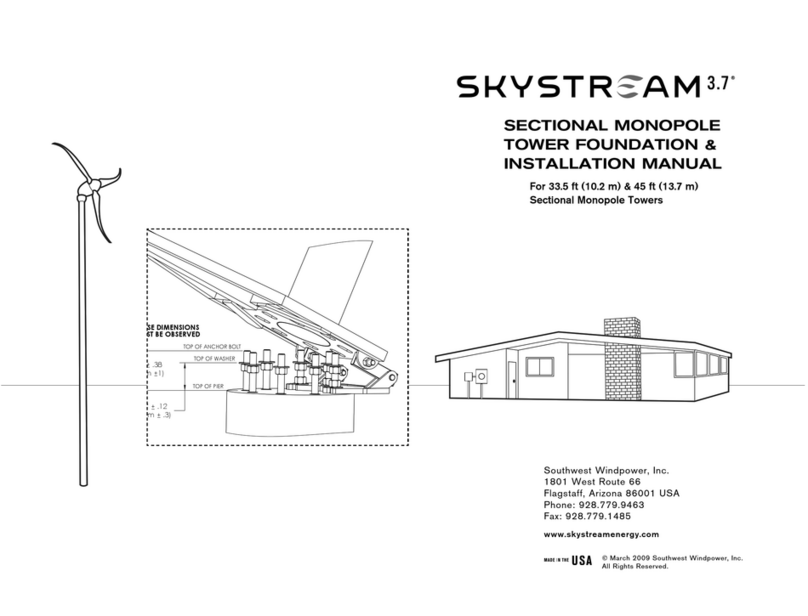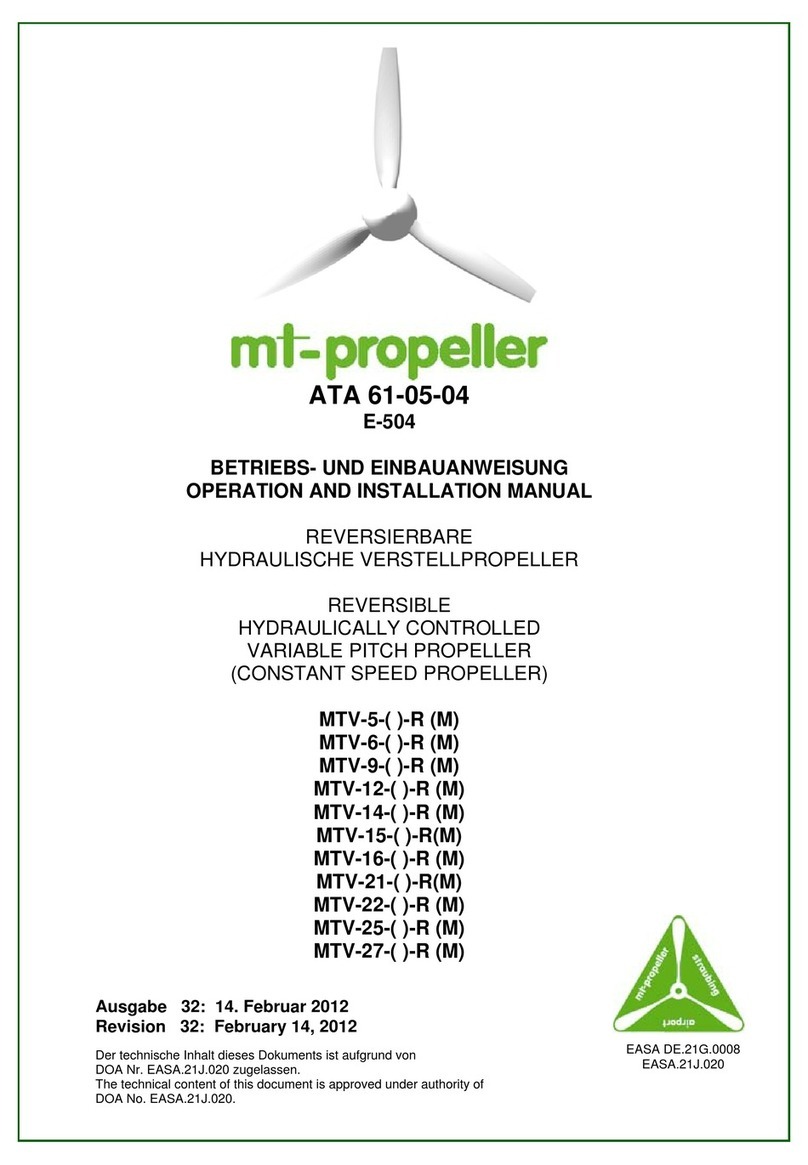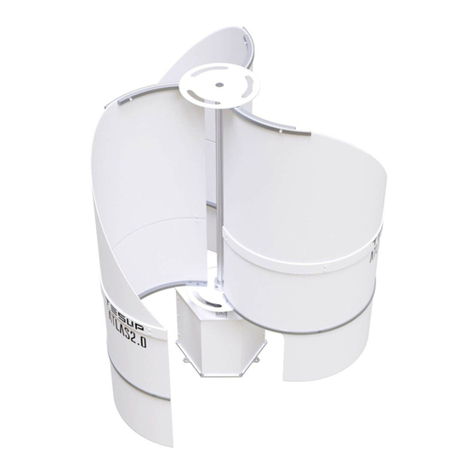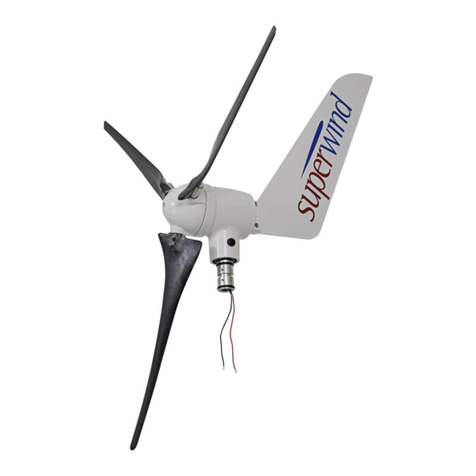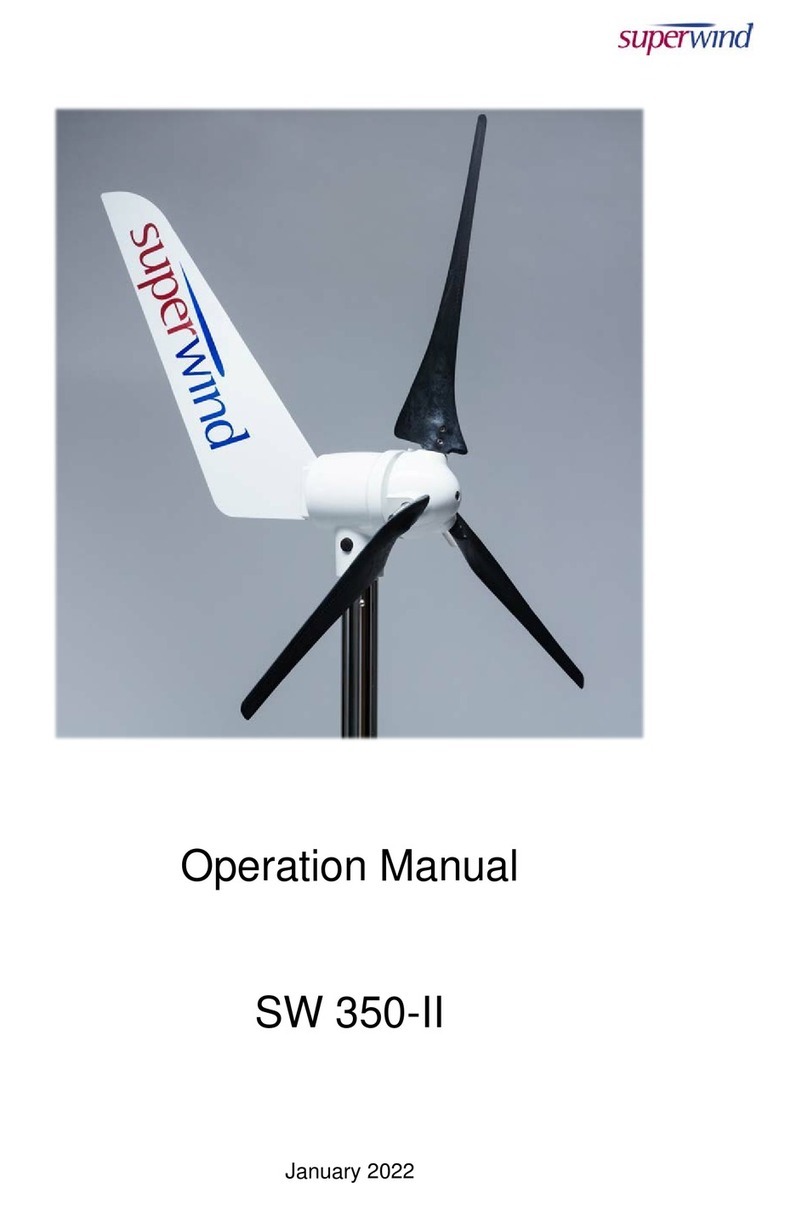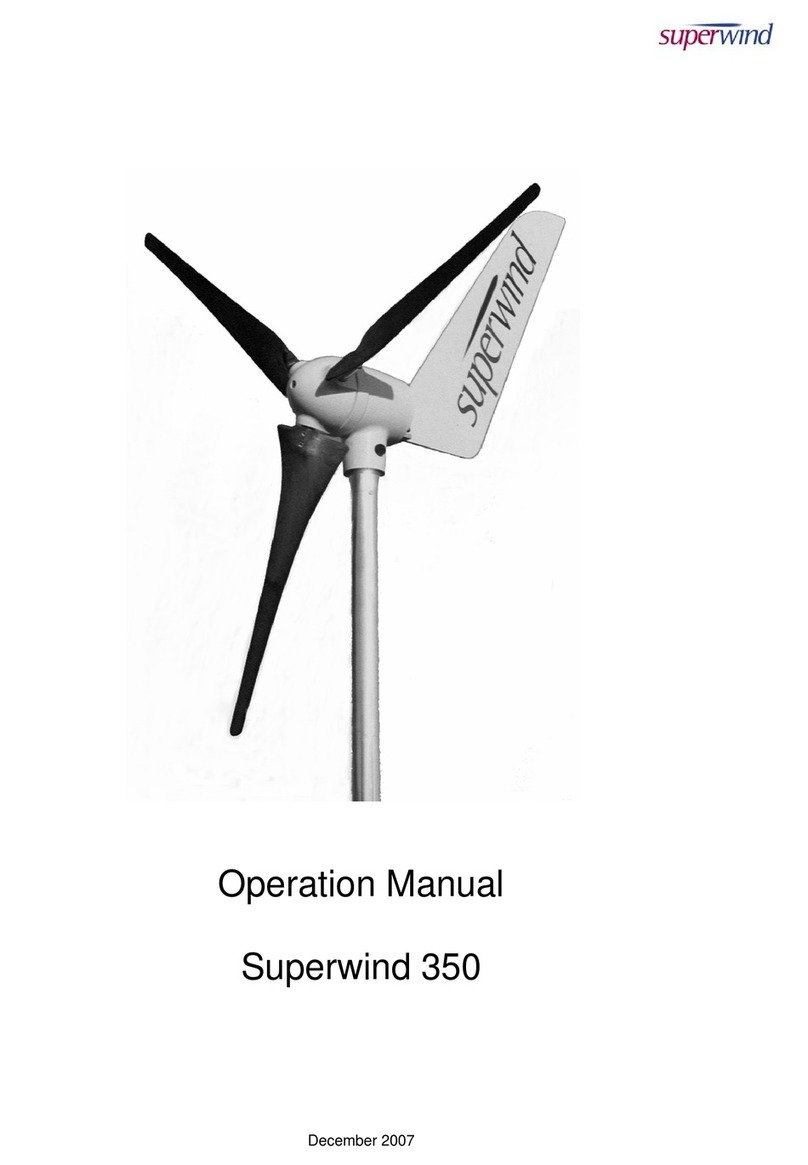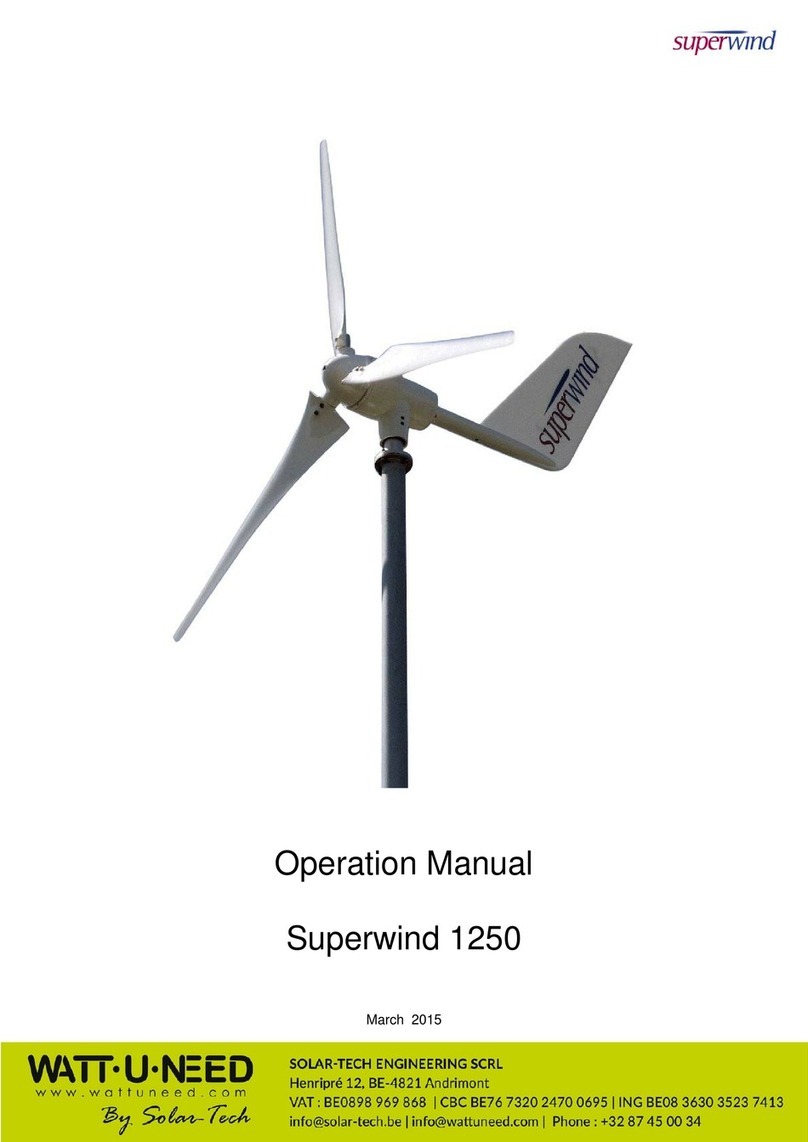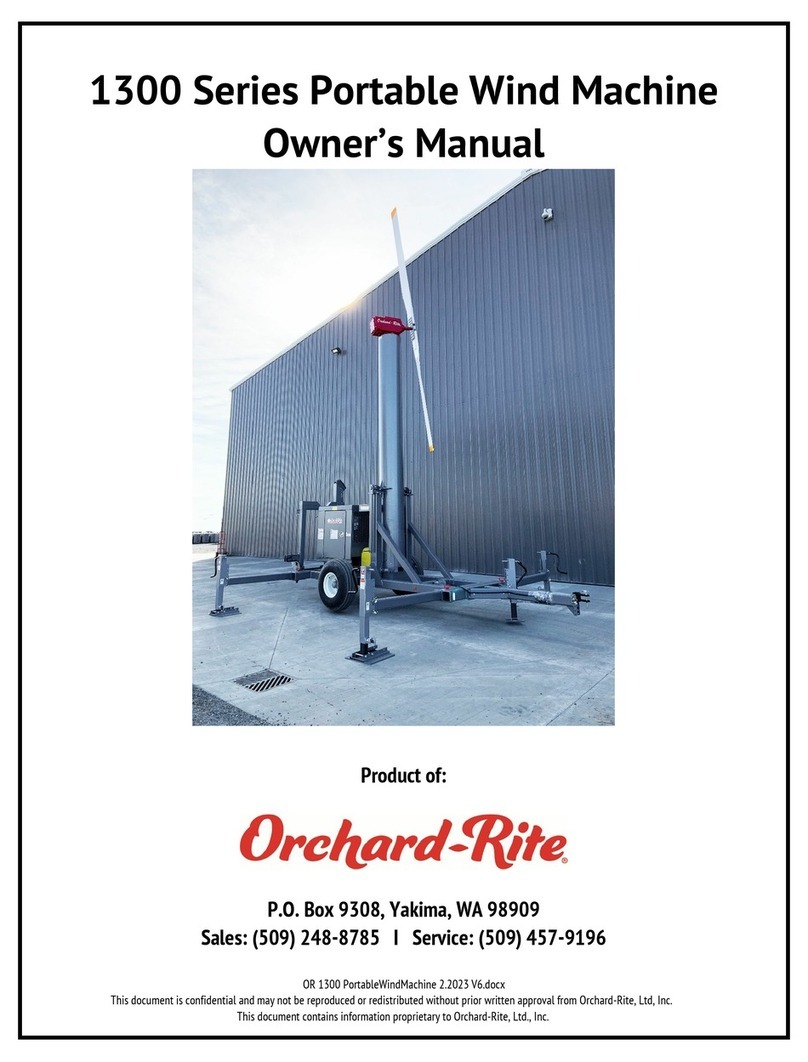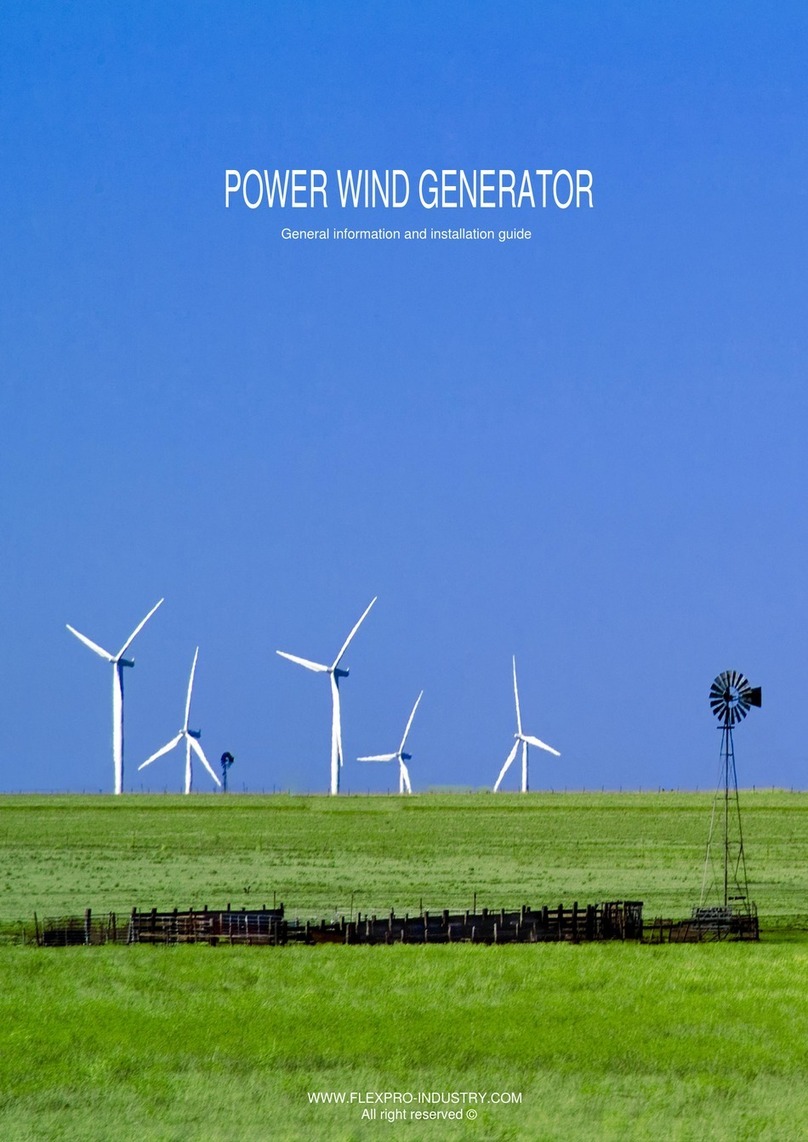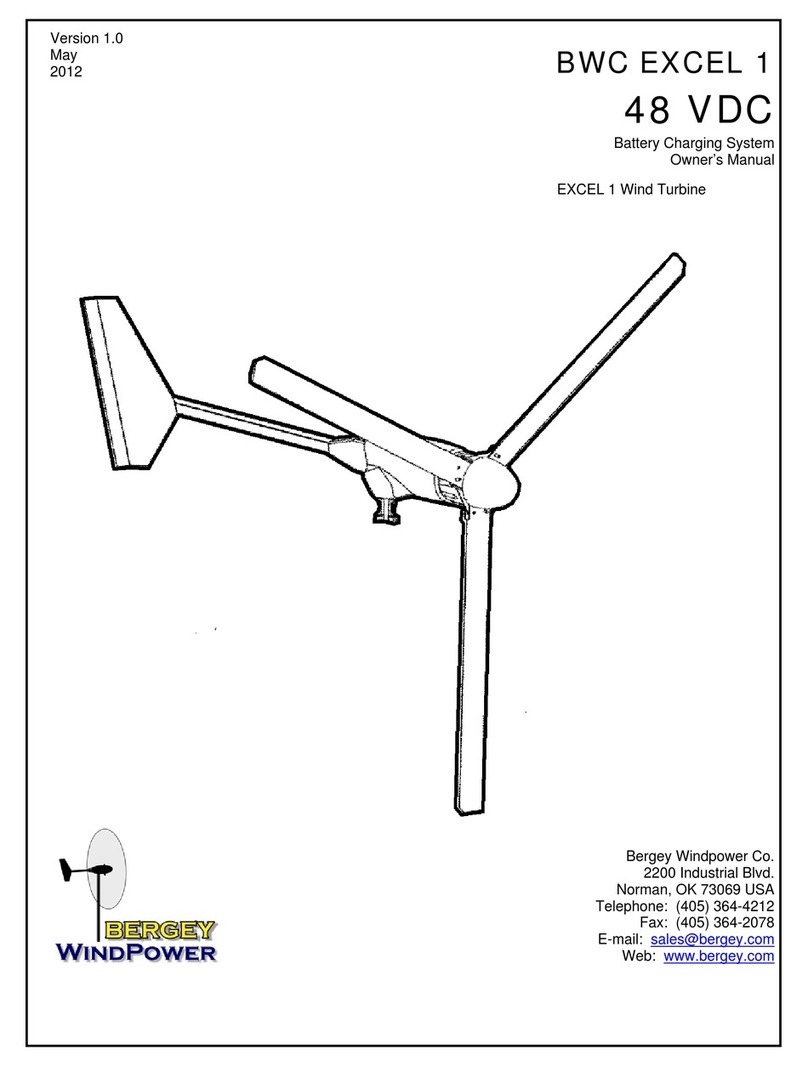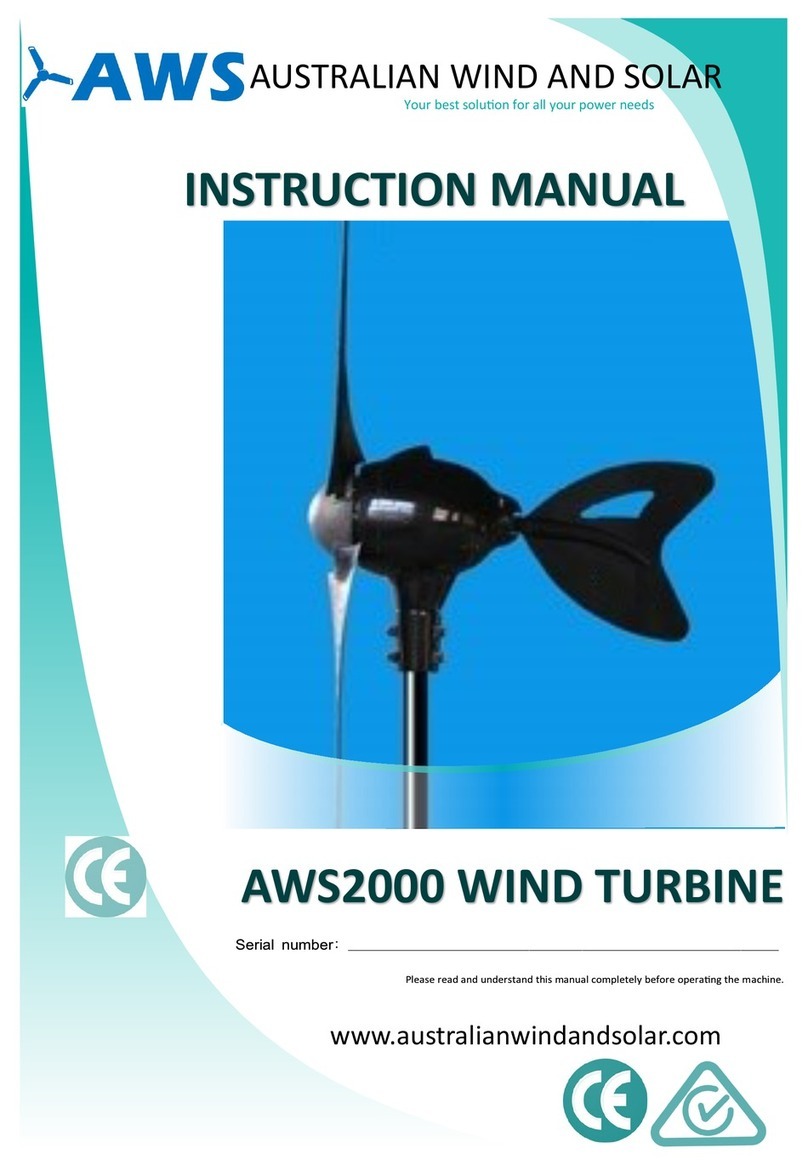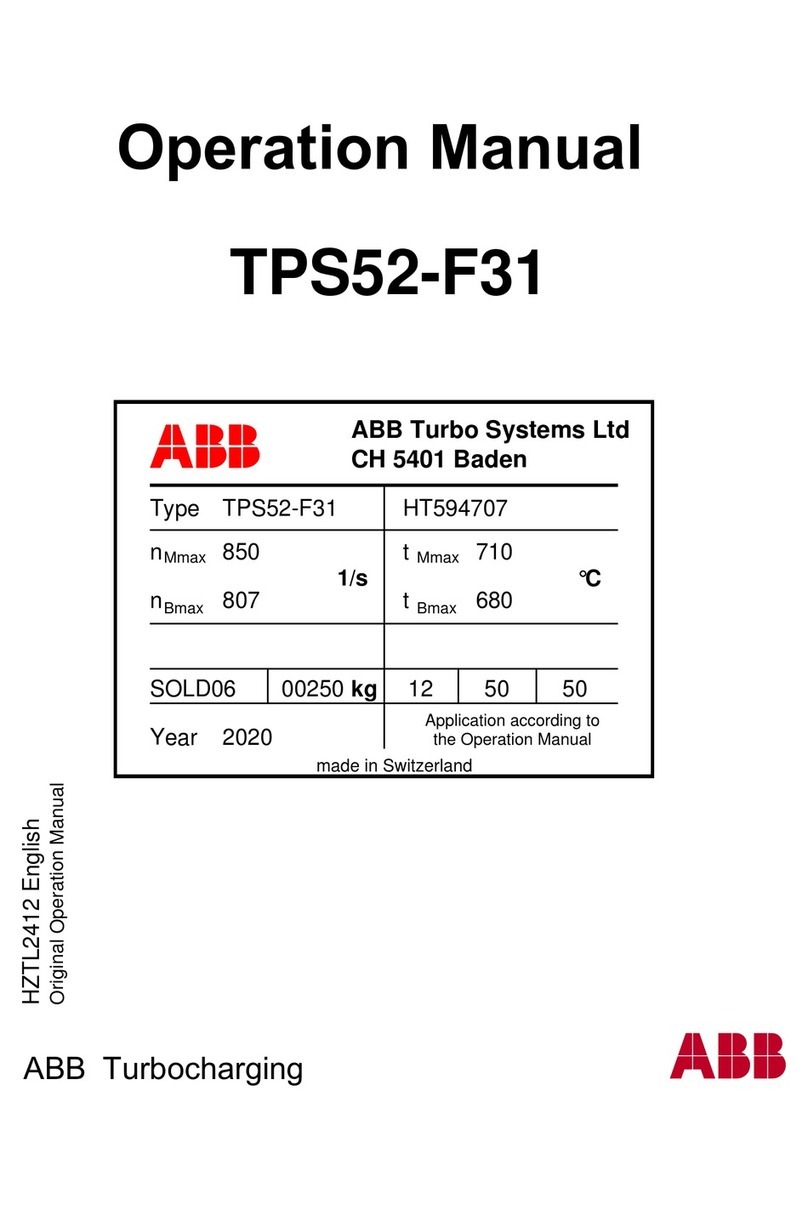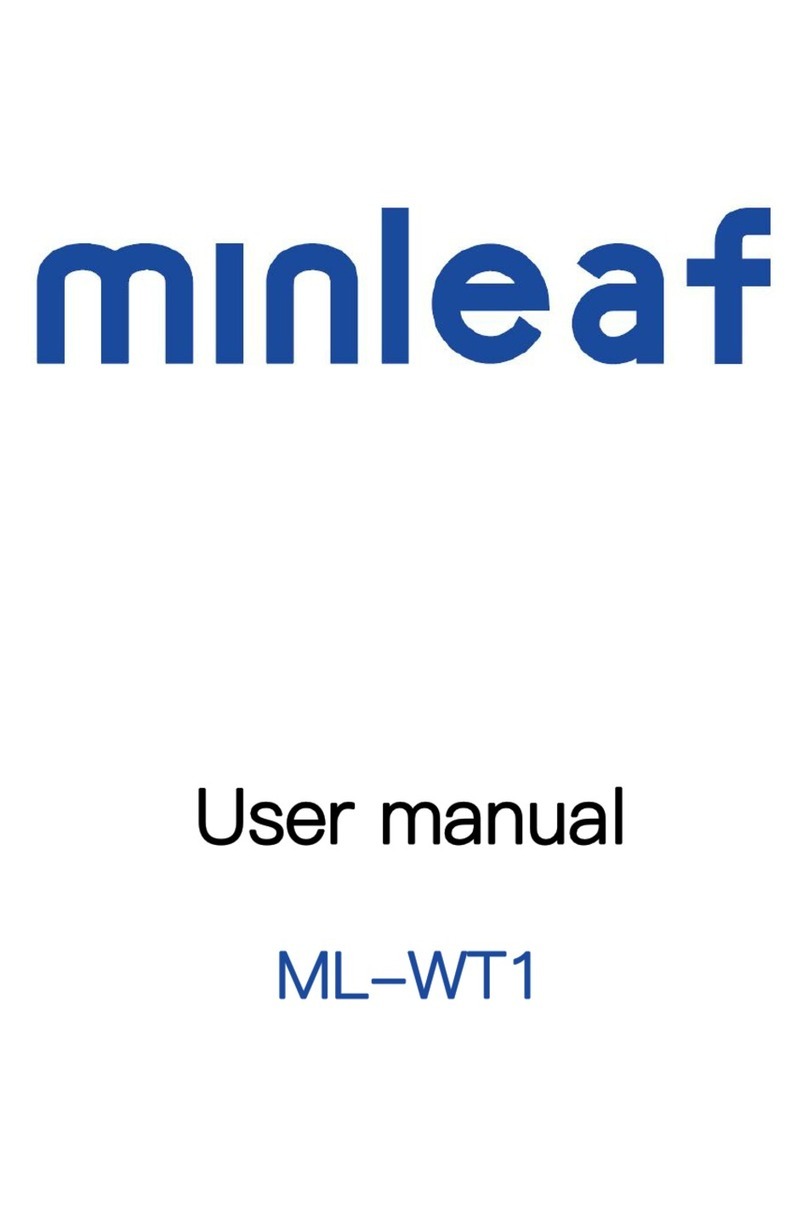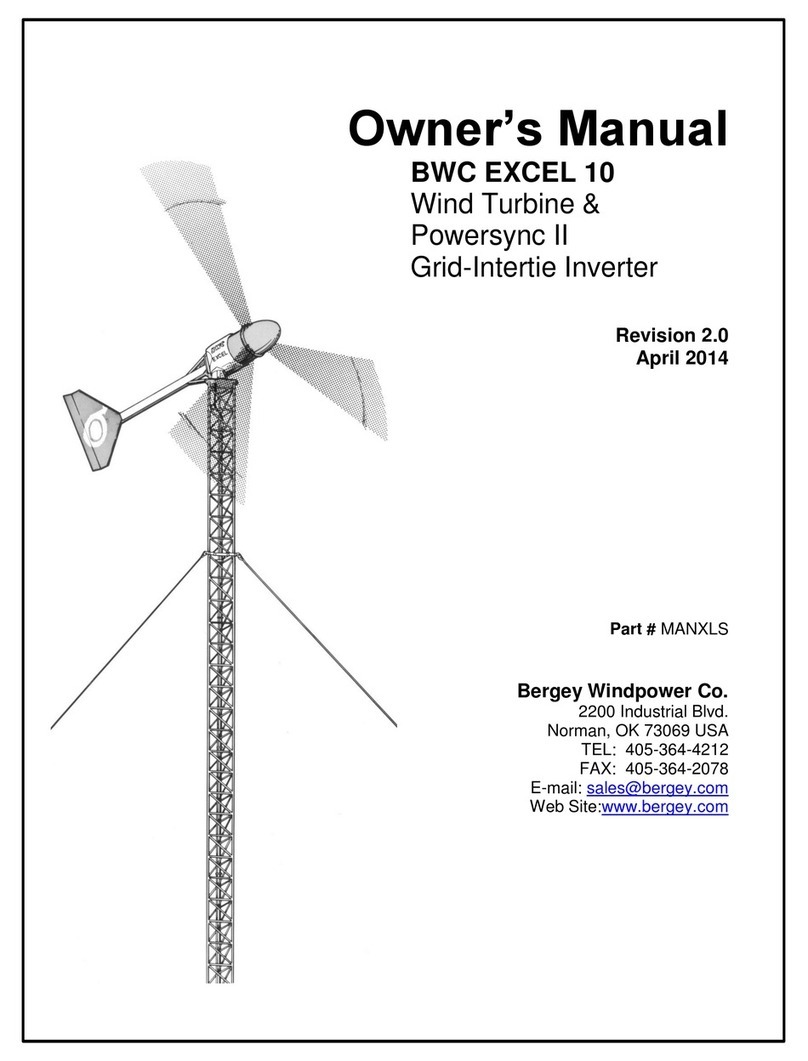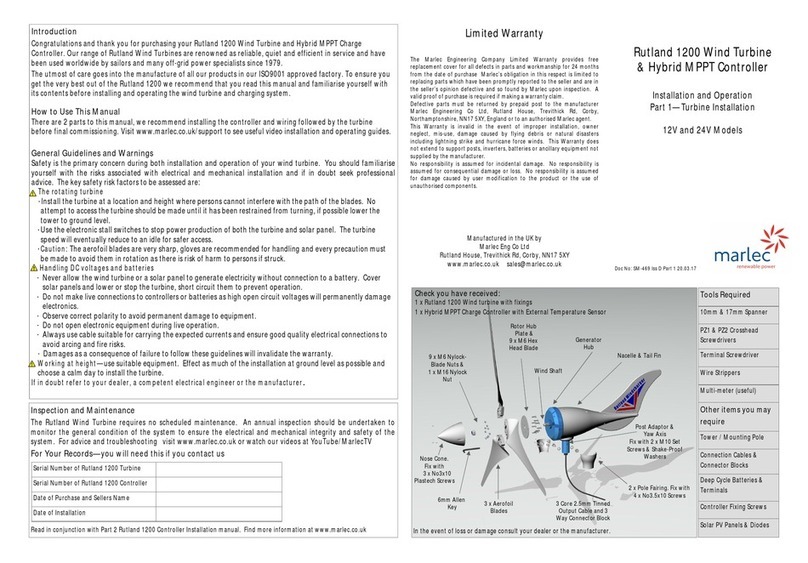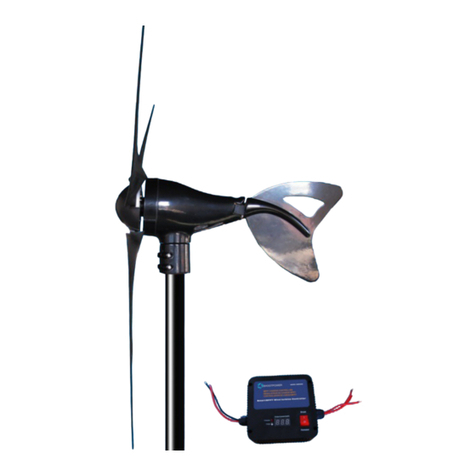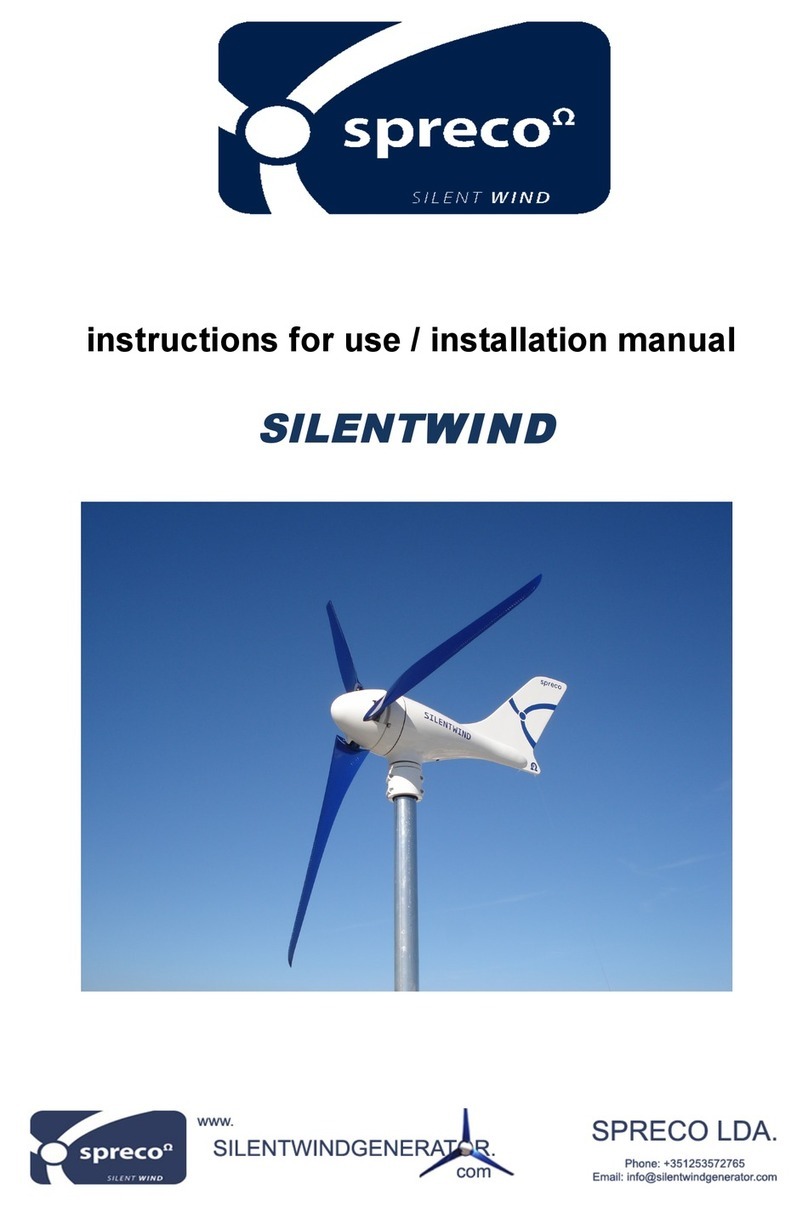
©Copyright Mission Critical Energy Inc, 2019 Version 1-2019
www.superwind.com
6.3.1 Wires...............................................................................................................16
AWG Wire Size Chart Table No. 6.3.1...........................................................17
6.3.2 Strain relief......................................................................................................17
6.3.3 Polarity............................................................................................................18
6.3.4 Batteries..........................................................................................................18
6.3.4.1 Charging the batteries......................................................................18
6.3.4.2 Selecting the batteries .....................................................................18
6.3.4.2.1 Battery Capacity ..............................................................19
6.3.4.3 Protection ........................................................................................19
6.3.5 Charge Regulator SCR 48 V..........................................................................20
6.3.5.1 Technical data..................................................................................20
6.3.5.2 Functional description......................................................................21
6.3.5.3 Installation location ..........................................................................21
6.3.5.4 Connecting the Charge Regulator ...................................................21
6.3.5.5 Wiring diagrams...............................................................................23
6.3.6 Fuses..............................................................................................................23
6.3.7 Stop Switch.....................................................................................................24
6.3.7.1 Mounting ..........................................................................................24
6.3.7.2 Dimensions ......................................................................................24
6.3.7.3 Electrical Connection.......................................................................25
6.3.7.4 Switch Terminals..............................................................................26
6.3.7.5 Component locations .......................................................................27
6.3.8 Diversion Load Power Resistor......................................................................27
6.3.9 Temperature Sensor.......................................................................................27
6.4 Grounding ..................................................................................................................27
7. SUPERWIND 350/48V GENERATOR ASSEMBLY ................................................28
7.1 Precautions ................................................................................................................28
7.1.1 Short Circuit....................................................................................................28
7.2 Delrin®Bushings ........................................................................................................29
7.2.1 Bushing Basics...............................................................................................29
7.2.2 Bushing Types................................................................................................29
Bushing Quick Guide Chart ..........................................................................31
7.2.2.1 American Delrin®White ...................................................................31
7.2.2.2 American Delrin®Black ...................................................................32
7.3 Mast mounting............................................................................................................32
7.3.1 Mounting on a 60.3 mm or 60.0 mm mast tube .............................................33
7.3.1.1 Preparations at the mast head.........................................................33
7.3.2 Mounting on a 48.3 mast tube........................................................................35
7.3.2.1 Preparations at the mast head.........................................................35
7.3.3 Mounting on other mast tubes........................................................................35
7.3.3.1 Preparations at mast head...............................................................36
7.3.4 Mast Tube Specifications ...............................................................................36
7.4 Rotor Blades ..............................................................................................................36
7.4.1 Mounting on the wind vane.............................................................................37
7.5 Rotor Assembly..........................................................................................................37
7.5.1 Attaching the rotor blades to the hub .............................................................38
7.5.2 Mounting the hub to the generator shaft ........................................................39
